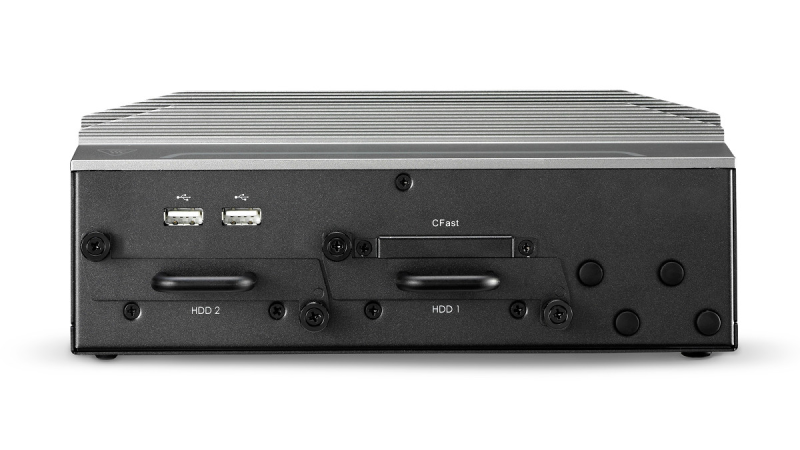Key Factors Affecting Oscillator Frequency Stability

Introducing the world of oscillators, where stability is everything! Oscillators ensure stable and reliable frequency signals for electronic devices. It’s important to understand the factors that affect the frequency stability of oscillators, whether you’re an experienced engineer or a newcomer. Grab your coffee and let’s explore the key elements that shape oscillators in this blog post!
Definition of Frequency Stability and Its Importance
The frequency stability of oscillators measures their ability to maintain a consistent output frequency over time, an essential characteristic in applications requiring precise timing and accurate signal generation.
Imagine the chaos if your clock constantly drifted or your communication system suffered from frequency fluctuations—missed deadlines, data corruption, and communication breakdowns would ensue. That’s why frequency stability matters.
Temperature variations can impact stability as electronic components exhibit different characteristics, causing frequency fluctuations. Voltage variations also play a role, affecting active elements in the oscillator circuit and deviating from the desired frequency.
Component aging introduces variations over time, while mechanical vibrations from nearby machinery can disrupt an oscillator’s operation. Effective mitigation strategies involve temperature compensation circuits, voltage regulation circuits, and the use of high-quality components with low aging rates and excellent thermal characteristics.
Industries like telecommunications and precision instrumentation heavily rely on oscillators with superior frequency stability for reliable operations in diverse and challenging environments.
Factors Affecting Oscillator Frequency Stability
Temperature Variations
Temperature variations have a significant impact on oscillator frequency stability. Thermal drift in oscillator components, triggered by changes in temperature, results in frequency deviations. Manufacturers tackle this challenge by integrating temperature compensation circuits into oscillator designs, automatically correcting for temperature-induced frequency shifts.
Additionally, utilizing high-quality components with stable characteristics across a wide temperature range can boost frequency stability in diverse environmental conditions. Accurate control of operating temperatures is essential for achieving high-frequency stability. Engineers can enhance performance and reliability in applications demanding precise timing signals by understanding and effectively addressing factors related to temperature variations through appropriate design techniques and component selection.
Voltage Variation
Voltage variation is an important factor influencing oscillator frequency stability, as deviations in the voltage supply directly impact the accuracy of frequency output. Fluctuations in voltage, stemming from factors like power supply noise and external disturbances, introduce unwanted variations in the electrical characteristics of oscillator components, affecting timing intervals.
To counteract this issue, voltage regulation circuits are employed to maintain a consistent input voltage despite external influences, ensuring stability in frequency generation. Engineers can enhance oscillator frequency stability for applications such as telecommunications systems, scientific instrumentation, precision measurement devices, radar systems, and more by implementing proper regulation techniques that minimize or eliminate voltage variations.
Understanding the contributing factors enables effective design strategies, including the use of high-quality regulators or stabilizers, to achieve improved performance and reliability across various industries where precise timing is important.
Aging of Components
Aging is when an oscillator’s components experience changes over time, which can affect its frequency stability. This change can be caused by various factors, including material degradation, continuous operation stress, and dielectric absorption effects. Any of these can cause the oscillator’s operating frequency to shift.
Additionally, mechanical stress from vibration or thermal cycling may also contribute to aging by altering component performance. Environmental conditions, especially when temperatures are high and humidity levels are elevated, can speed up this degradation process. To combat these challenges, manufacturers carefully choose high-quality components that have superior reliability characteristics for their oscillators.
It is important to understand how components age and take proactive measures to minimize their impact when designing oscillators with long-term frequency stability requirements.
Mechanical Vibrations
Mechanical vibrations can significantly impact oscillator frequency stability, causing fluctuations in output frequency due to external disturbances or internal resonances. Vibrating forces can alter the oscillator’s physical dimensions and electrical characteristics, leading to variations in oscillation frequency.
To combat these effects, engineers employ techniques like using vibration-damping materials, strategic mounting, or designing robust oscillator structures. Isolation measures, such as shock absorbers or isolating platforms, can also reduce transmitted vibrations from surrounding equipment.
Industries requiring high-frequency stability, like telecommunications, aviation, and precision measurements, proactively address mechanical vibrations. By understanding and mitigating this factor, they ensure reliable oscillator performance even in vibration-prone applications.
Techniques for Improving Frequency Stability
The following techniques can be used to improve frequency stability of oscillator to ensure reliable and accurate performance:
Temperature Compensation Circuits
temperature variations are a key factor impacting oscillator frequency stability, leading to frequency drift and potential inaccuracies in timing and signal generation. To address this issue, temperature compensation circuits are employed. These circuits, equipped with sensors, monitor ambient temperature and provide feedback signals to regulate the oscillator’s operation.
By automatically adjusting parameters in response to temperature fluctuations, these circuits ensure a stable frequency output across a wide temperature range. Beyond enhancing accuracy, they also contribute to the reliability and longevity of oscillators by minimizing the impact of thermal variations.
Effective temperature compensation is important for industries and applications relying on precise timing or signal generation, enabling consistent frequency stability under diverse environmental conditions and supporting technological advancements.
Voltage Regulation Circuits
Voltage Regulation Circuits actively ensure the frequency stability of oscillators by mitigating variations in power supply voltage. Oscillators, sensitive to voltage fluctuations, can experience output frequency changes. These circuits stabilize the supply voltage through feedback control loops, regulators, and filters, maintaining a constant level.
By actively monitoring and adjusting the input voltage, they prevent irregularities that could impact oscillator performance, also safeguarding against sudden spikes or dips in power supply voltages. Implementing strong voltage regulation circuits is important for applications with important precision timing or waveform generation, significantly contributing to overall frequency stability and reliable operation over extended periods.
Use of High-Quality Components
The use of high-quality components is important in ensuring the stability of an oscillator’s frequency. These components, characterized by precise tolerances and minimal variations, contribute to a more stable frequency output by minimizing drift over time. For instance, high-quality capacitors and precision resistors help control variations in capacitance and resistance, respectively, ensuring consistency in voltage levels.
Beyond mitigating component variability, high-quality components often exhibit superior noise rejection capabilities, making them less susceptible to external factors like electromagnetic interference or mechanical vibrations that could impact frequency stability. Incorporating such components allows engineers to design oscillators with tighter specifications and enhanced overall stability, for important applications in telecommunications, precision measurement equipment, and consumer electronics where accurate timing is essential. Therefore, investing in high-quality components is important when striving for reliable frequency stability in oscillator design.
Applications and Industries that Require High Frequency Stability
In today’s technologically advanced world, frequency stability of oscillators assumes an important role in various applications and industries. The following key sectors underscore the important importance of precise and consistent frequency:
Telecommunications
- Mobile networks, satellite communication systems, and fiber optic cables rely on oscillator frequency stability to ensure clear and uninterrupted signal transmission over long distances.
Aerospace
- The aerospace sector, which includes aircraft navigation systems and radar technology for air traffic control, demands high frequency stability to achieve precise timing and synchronization, ensuring safe operations and accurate measurements.
Scientific Research
- Research in physics, chemistry, biology, and astronomy benefits greatly from oscillators with high frequency stability. Accurate timekeeping is important for conducting experiments, collecting data, and synchronizing multiple instruments.
Metrology (Science of Measurement)
- In metrology, instruments used for calibration require a stable reference signal to ensure accurate measurements across industries, from manufacturing processes to medical devices.
Industrial Automation
- Industrial automation systems with complex machinery operating at specific frequencies depend on highly stable oscillators. Stability is important to prevent errors, malfunctions, and ensure smooth operation, contributing to increased productivity in manufacturing plants.
These examples emphasize the diverse range of applications where oscillator frequency stability is important. As technology advances, the demand for more precise measuring instruments is expected to grow, underscoring the ongoing significance of achieving exceptional frequency accuracy across various industries.
Conclusion
In conclusion, frequency stability of an oscillator is of utmost importance for precise timing across diverse industries. Challenges such as temperature variations, voltage fluctuations, aging components, and mechanical vibrations can compromise stability, necessitating the application of techniques like temperature compensation and voltage regulation circuits.
The inclusion of high-quality components further bolsters stability. Industries like telecommunications, aerospace, military, and scientific research heavily rely on stable oscillators for accurate timing. Achieving optimal frequency stability not only enhances overall system performance but also facilitates efficient data transmission, precise measurements, and reliable communication in challenging environments.
Engineers, through strategic design and the integration of advanced technologies, play an important role in improving electronic system performance and ensuring reliability in various applications. Recognizing the significance of oscillator frequency stability is important for success in maintaining precise timing accuracy, spanning applications from GPS receivers to satellite communications.




